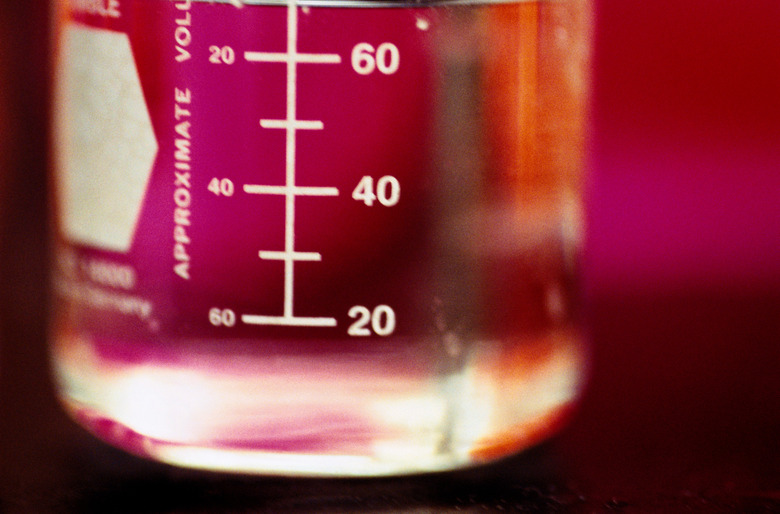How To Calculate Weight By Volume
Have you ever looked at something large and non-living, like a battle tank or a small commercial airliner, and wondered how much it weighs? If so, how did your mind go about trying to even guess?
Did you think of terms like "heavy," "thick," "light" and "hollow"? Did you actually try to compute what "big" meant in rough mathematical terms?
You would probably guess that a tank and a plane that appeared to be roughly the same size would be quite different in mass (and they are), but why?
If any of this rings familiar, it's because whether you were aware of it or not, your brain was trying to find the point of intersection of the physical quantities of volume ("size") and mass times the acceleration of gravity (weight).
That point of intersection along the journey from volume to weight is density, which is a direct measure of the amount of "stuff" per unit of three-dimensional space, or mass divided by volume.
What is Density?
What is Density?
Density is an inherent (built-in) property of a substance that depends in how much of it occupies a given amount of space, sometimes with a dependence on temperature because some substances, including water, can expand and contract with heat and cold to varying degrees.
Density is expressed in units of mass divided by volume, the standard international (SI) units being kilograms per cubic ("cubed") meter, or **kg/m3.** In the lab, units such as grams per cubic centimeter, or g/cm3, are more common.
- One cm3 is equivalent to one milliliter (mL); both are units of volume. In most chemistry settings, the latter is preferred.
When you think of an object as heavy, you are usually accounting for its size. A bag of cotton balls the size of a sports arena would be "heavy." When you think of a type of substance as "heavy," what you're really getting at is density. This quantity is normally specified by ρ, the lowercase Greek letter rho.
Mass, Weight and Gravity
Mass, Weight and Gravity
While mass is not weight, more massive objects have proportionally higher weights because of **Newton's law of gravity,**
\(F=mg\)
with g being the acceleration owing to gravity. **g has a value of 9.8 m/s2** on Earth, meaning that it imparts a force of 9.8 m/s2 × 15 kg = 147 Newtons (N) on a 15-kg (33-pound) rock.
This same relationship implies that for a given object (that is, one with constant mass), the force it experiences owing to gravity is directly proportional to the value of g, which in turn depends on the mass of the object responsible for the gravitational field. On the moon, where g = 1.625 m/s2, a 15-kg mass still has a mass of 15 kg, but its weight is reduced by a factor of about six: 1.625 m/s2 × 15 kg = 24.4 N.
Mass to Volume Formula
Mass to Volume Formula
If you are asked to convert kg to volume in m3 for a given substance, you will get a number 1,000 times greater than you would if you chose to convert g to volume in cm3 (or mL).
For example, 1 cubic meter of water, which has a density of exactly 1 kg/L by definition, has a mass of 1,000 kg (just over 2,200 pounds) and a volume equal to 1,000 L. One g of water, on the other hand, takes up just one cm3 (or mL) so an other way to express this is **1 g/mL.**
Convert kg to Liters
Convert kg to Liters
To convert kg to liters, since kilograms and liters are both SI units, you need only divide the mass by the density. Since
\(\rho=m/V\text{ , }m=\rho V\text{ , and }V=m/\rho\)
When converting from grams to volume instead, the same rule applies as long as the units of volume are cm3 (mL).
Cite This Article
MLA
Beck, Kevin. "How To Calculate Weight By Volume" sciencing.com, https://www.sciencing.com/calculate-weight-volume-4623677/. 21 December 2020.
APA
Beck, Kevin. (2020, December 21). How To Calculate Weight By Volume. sciencing.com. Retrieved from https://www.sciencing.com/calculate-weight-volume-4623677/
Chicago
Beck, Kevin. How To Calculate Weight By Volume last modified August 30, 2022. https://www.sciencing.com/calculate-weight-volume-4623677/
